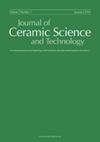陶瓷增材制造:综述
IF 0.4
4区 材料科学
Q4 MATERIALS SCIENCE, CERAMICS
引用次数: 336
摘要
陶瓷的增材制造(AM)正在进入一个第一个工业应用正在变得经济有利可图的领域。这篇综述文章提供了文献报道的ammethod来塑造陶瓷组件的调查。这表明增材制造已经生产出没有裂纹或大孔隙的陶瓷部件,并且具有接近传统生产陶瓷的机械性能。通过优化amm工艺参数或在amm工艺后执行外扩步骤,可以制造无裂纹和无孔陶瓷。在增材制造过程中采用胶体处理技术也是可取的。最后,本文论证了多步间接增材制造工艺更适合不同类型陶瓷的成型,而单步直接增材制造工艺可以更快地生产陶瓷零件。本文章由计算机程序翻译,如有差异,请以英文原文为准。
Additive manufacturing of ceramics: A review
Additive manufacturing (AM) of ceramics is coming to an aera where the first industrial applications are becoming economically profitable. This review paper provides a survey of AMmethods reported in literature to shape ceramic components. It demonstrates that AM has produced ceramic parts that have no cracks or large pores and have mechanical properties close to those of conventionally produced ceramics. Crackand pore-free ceramics can be manufacturedbyoptimizing theAMprocess parameters orperforming extradensification steps after theAMprocess. It is also advisable to incorporate colloidal processing techniques in the AM process. Finally, the paper demonstrates that, especially forAMof ceramics, themulti-step indirectAMprocesses aremore appropriate to shape different types of ceramics, while the single-step direct AM processes can produce ceramic parts more rapidly.
求助全文
通过发布文献求助,成功后即可免费获取论文全文。
去求助
来源期刊

Journal of Ceramic Science and Technology
MATERIALS SCIENCE, CERAMICS-
CiteScore
0.80
自引率
0.00%
发文量
0
期刊介绍:
The Journal of Ceramic Science and Technology publishes original scientific articles on all topics of ceramic science and technology from all ceramic branches. The focus is on the scientific exploration of the relationships between processing, microstructure and properties of sintered ceramic materials as well as on new processing routes for innovative ceramic materials. The papers may have either theoretical or experimental background. A high quality of publications will be guaranteed by a thorough double blind peer review process.
 求助内容:
求助内容: 应助结果提醒方式:
应助结果提醒方式:


